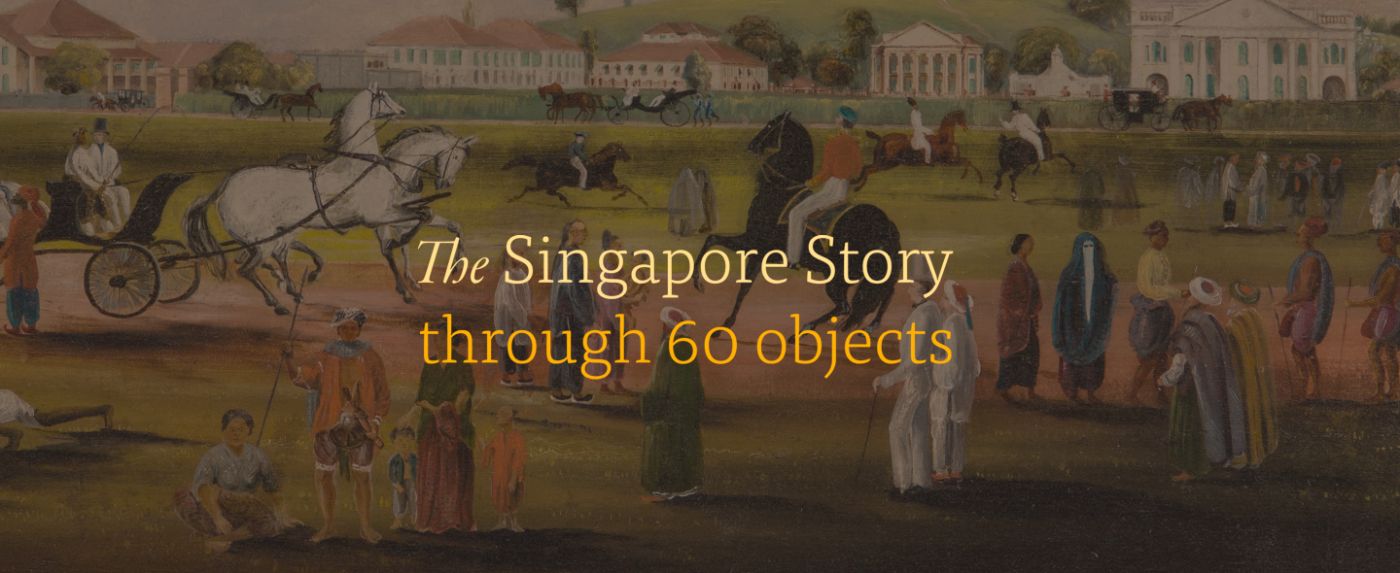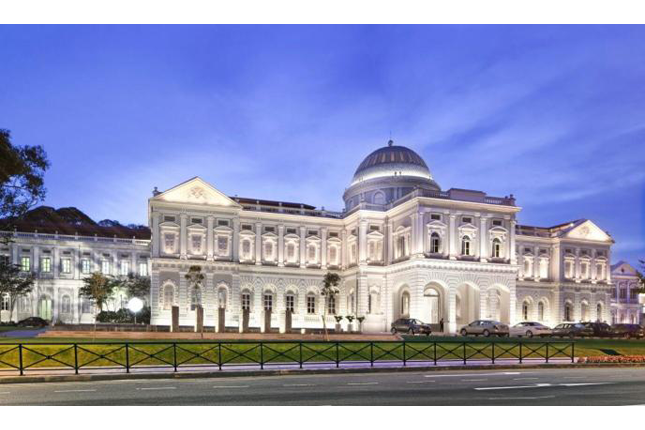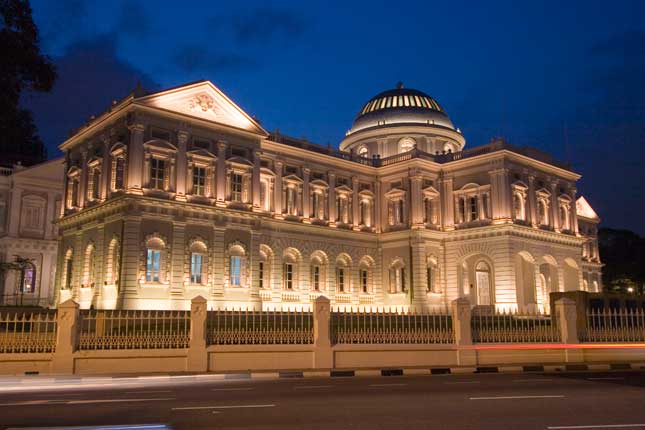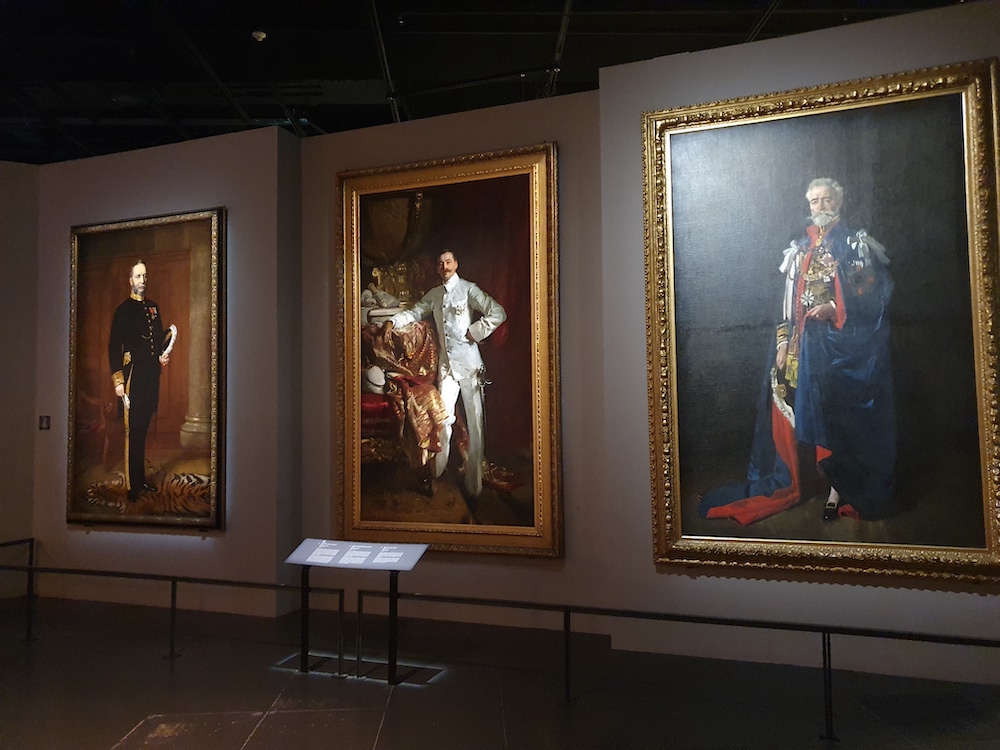Text by Szan Tan, Curator (Exhibitions), National Museum of Singapore
Images: Soprintendenza Speciale Per I Beni Archeologici Di Napoli E PompeI
BeMuse Volume 3 Issue 4 - Oct to Dec 2010
“... they are human beings seen in their agony. This is not art, it is not imitation; these are their bones, the remains of their flesh and their clothes mixed with plaster, it is the sadness of death that characterises body and form. I see their wretchedness. I hear their cries as they call to their mothers, and I see them fall and writhe. How many human beings perished in similar or even worse ways! Up to now temples, houses and other objects have been found that have aroused the curiosity of educated people, artists and archaeologists; but now you, my dear Fiorelli, have uncovered human pain, and every man feels it.”
– Luigi Settembrini (1813-76)
On 24 August 79 CE, Mount Vesuvius erupted and buried the Roman town of Pompeii and its neighbours — Herculaneum, Oplontis, Stabiae and Boscoreale — in the southern Italian region of Campania with volcanic mud, ash and pumice. All the towns perished within two days and were only rediscovered in the 18th century. In 1863, Luigi Settembrini, a professor of Italian literature at the University of Naples legitimised the success of Giuseppe Fiorelli’s discoveries in Pompeii when he commented on the plaster casts of bodies of victims found in Pompeii. Giuseppe Fiorelli (1823-1896), director of the archaeological works in Pompeii from 1860 to 1875 and curator of the National Archaeological Museum in Naples from 1863 to 1875 had invited his friend, Settembrini to view the body casts. Fiorelli made use of his training as a numismatist and applied the method of plaster casting to his archaeological work. Volcanic ash had hardened around the bodies of the victims and the flesh of the bodies had decayed. Cavities were formed and Fiorelli ordered a mixture of water and plaster to be poured into these cavities, revealing not only the shapes of the bodies but also their clothing and facial expressions.
William Dean Howells, (1837-1920) the American consul in Naples then, wrote in 1864 upon seeing four body casts displayed in a temporary museum in Pompeii. He mentioned about the victims “whose shape the settling and hardening ashes took; whose flesh wasted away, and whose bones lay there in the hollow of the matrix till the cunning of this time found them, and, pouring liquid plaster around the skeletons, clothed them with human form again, and drew them forth into the world once more.”
To this day the body casts of Pompeii still leave a striking impression on visitors, evoking a mixture of compassion and simultaneous morbid curiosity about the way the victims have died and their identities and former lives. Take for example, the famous body cast of the ‘crouching man’. Discovered at the southern walkway of Pompeii’s Large Palaestra, the man had covered his mouth with the edges of his cloak as the toxic fumes and volcanic ash overcame him. His pose is typically rigid due to the high temperatures of the eruption which caused muscle spasms and contractions.

Another extreme example of body contortion can be seen in the body cast of a dog found in the House of Orpheus. Left chained to a post to guard the house while its occupants fled, the dog attempted to save itself by climbing up the lapilli that filled the house from the compluvium1 of the atrium2. As the pumice fall-out deepened, the dog climbed higher— until eventually it ran out of chain and was suffocated. The bronze studs around its neck are all that remains of a leather collar. Its contorted position during its death made it difficult to cast.

It has been gathered from excavation reports that a total of 1,047 victims have been found in Pompeii and a total of 103 casts have been made of them.3 The population of Pompeii has been estimated at 12,000 and if there were only that many victims found in the town itself, it meant that many did manage to escape after all.
The moving evidence of the almost instantaneous deaths of the volcano’s victims encapsulated in the body casts are not the only reasons which make Pompeii and the Vesuvian archaeological sites so intriguing and famous. The importance and uniqueness of the sites lie in the fact that they possess wide-ranging evidence of Roman urban life, despite post-eruption disturbances. From the public and domestic architecture which has been uncovered, to wall decorations, mosaics, pottery and metal work, it was possible for archaeologists and historians to piece together a fairly accurate picture of the daily life and culture of Roman society in the 1st century CE.
One could easily visualise the entertainment sports they enjoyed, or the food they ate and the gardens they relaxed in, simply from the amazingly well-preserved archaeological evidence of the sites, in particular, those from Pompeii. While Rome offered a glimpse into the grandeur of imperial life, the remains found at Pompeii and its neighbours reflect the liveliness of the daily lives of ordinary citizens, freedman and slaves living in the provincial towns of the Roman empire.
Amongst the most spectacular and interesting finds which gives us a glimpse into the daily lives of the Pompeians are those related to public entertainment, in particular the gladiatorial gear found in the Quadriporticus 4 of the theatres. Gladiatorial contests were the most popular form of public entertainment. These games were originally linked to funeral rites and staged as a tribute to the deceased. They evolved into gladiatorial contests (munera) that were sponsored by magistrates and political aspirants, in order to win the support of the people.
Gladiators were mostly prisoners of war or those condemned to death. Slaves and forced labourers could also become gladiators and literally fight their way towards freedom. On occasion, free men who were forced by circumstances or who were attracted to fame and fortune signed on to become gladiators. Victorious gladiators could keep the bulk of their earnings and accumulate large sums of money, and win the hearts of many fans. Nevertheless, they led hard lives for they could die at any moment during combat and, if defeated, were at the mercy of the spectators.
There were many types of gladiators, each distinguished by their different combat gear and strategies. This helmet with an angular crest and visor is unique to the murmillo gladiator and is amongst the 15 helmets, 14 shinguards, six shoulder guards, and other bronze gladiatorial parade weapons found in the Quadriporticus of the Theatres. Built between the second and beginning of the 1st century BCE, the Quadriporticus was transformed into the training and housing barracks for gladiators when the earthquake of 62 CE heavily damaged the gladiator barracks in Insula V and put it out of use.

A bronze and silver round shield is also amongst the spectacular finds of the Quadriporticus. It was probably used by a hoplomachus gladiator who also fought with a lance and sword. Encircled by laurel wreaths for victory, the medallion in the centre bears the head of the legendary Gorgon Medusa, whose gaze is said to have turned men into stone.

If we want to know what the Pompeians ate, it is not difficult to deduce their daily diet from the carbonised remains of food found in Pompeii. Carbonised olives, barley grains, walnuts, peach stones, broad beans, figs and oyster shells have been found in the homes and villas of Pompeii. Hence we know for example that the Pompeians ate a good variety of seafood as Pompeii was after all situated near the sea and fish sauce was also found in abundance in the storage jars used in homes and take-away shops known as thermopolia. Carbonised breads were also found throughout Pompeii in these shops as well as homes and bakeries. Besides actual examples of food found in Pompeii, their depiction in frescoes or wall paintings further suggest the range of food the Pompeians enjoyed.
Our knowledge of Greek and Roman paintings is largely derived from the abundant examples of frescoes that have survived from Pompeii and its neighbouring sites. These fresco paintings reflect the ideals and aspirations of their patrons. In emulating Greek styles, the Romans sought to distinguish themselves as cultivated and refined people. These painted wall decorations further served to extend the small confines or windowless rooms of Roman houses.
They bring one into an imaginary realm beyond the physical confines of an enclosure. Take for example, this sumptuously painted garden fresco painted within three frames. Found in the House of the Golden Bracelet in Pompeii, a rather luxurious villa built over three levels and overlooking the sea on the western slope of Pompeii, this fresco originally covered the entire back wall of a summer dining room. Its painting of a garden created the illusion of a lush garden populated with birds within a dining room. Each panel depicts the scene of a garden framed in niches by a light trellis structure. Two oscillas (decorated roundels) and a mask are depicted as hanging from the centre of each panel. Exotic motifs such as a pair of facing sphinxes also feature in this fresco. Dotted amongst the rich vegetation depicted are various birds in a multitude of poses.

Apart from this beautiful fresco, the house was decorated with many other frescoes on the two lower levels containing the bedrooms (cubicula), dining rooms (triclinia), reception rooms and garden. In its garden were also buried fragments of finer examples of frescoes which were destroyed in the earthquake of 62 CE. These were possibly previously used to decorate the dining rooms or garden.
Apart from wall decorations, sculptural decorations excavated from the gardens and villas of Pompeii gave us an idea to the environment they lived in. Elaborate peristyled gardens (viridaria) were often filled with herms, statues, fountains, garden furniture and even aviaries. With the construction of aqueducts in the 1st century CE, water features such as fountains became common in Pompeian gardens.
Garden sculptures often represented the god of wine Bacchus and his entourage of satyrs and maenads, alluding to the wild side of nature. This bronze statue of a young Bacchus would have stood in the garden of a private home. As the god of wine and enjoyment, the imagery of Bacchus was appropriately found in the garden. The cult of Bacchus was a popular one and just outside of Pompeii was a large temple dedicated to his worship.

Herms such as the one below, featuring a young and old Bacchus, often decorated the gardens of the Romans too. Herms are originally pillars serving a protective function for travellers and found at crossroads during Greek times. They were later adopted into Roman towns serving the same functions but went beyond the crossroads and into the gardens of the Roman people as decoration.

From the time it was discovered since the 18th century till today, Pompeii does not cease to amaze for the plethora of archaeological finds when pieced together, not only coherently tell the story of how the ancient Romans lived but also trace the foundations of modern society. From their political system to trade and commerce to the aqueducts and even forms of public and domestic architecture, the Romans have left behind a rich legacy on which modern society was built.
Although the forms may have changed, the ideals, aspirations and inclinations of human beings have not changed very much over time. In fact in many ways, we are much more alike to the ancients than we realise. The violence of the gladiatorial games for example, have transcended to that of computer games, whilst the aspirations of human beings to surround ourselves with beauty and imagery alluding to another world, have not changed too. Furthermore, Mother Nature still reigns over mankind, not matter how much we think we have conquered her.
Notes

















